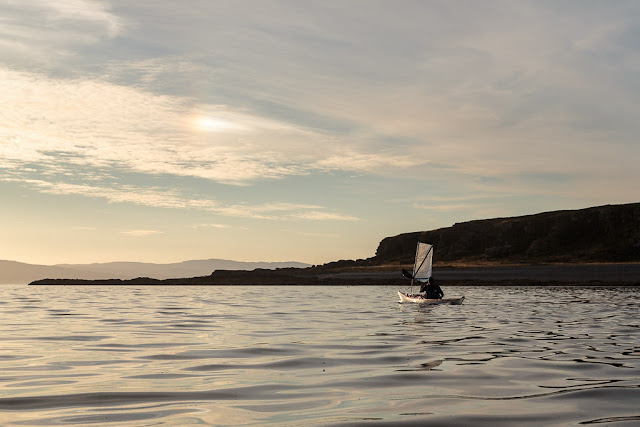Ian and I set to work building a fire on the shore of Loch Hourn. We chose a site below the highest tide level but, as it was just before predicted HW, we expected the tide not reach the fire.
Of course the sun did not stay out long. Yet another squall battered down the loch towards us obliterating the view of the mountains as it came. A brave rainbow framed the scene but lasted only a few seconds till it was lost in a wall of grey. The approaching storm was elemental and truly magnificent. For a while we were transfixed by its beauty but just in time, we abandoned the new fire to its own devices and fled to the tents. The noise as the wind ripped at the flysheet and alternate bands of rain and hail lashed down added to the sense of wildness.
After the storm, we emerged from the tents to find a dusting of fresh snow on the summits but more importantly the wind had dropped.
As the sun began to set on this landlocked arm of the sea...
... its still waters reflected the sunset colours of the clouds, despite the setting sun being hidden below dark enclosing mountain ridges.
As night fell and the fire burned more brightly we swapped tales of kayaking adventures. We might be locked in, in inner Loch Hourn, but we were no longer locked down!














































